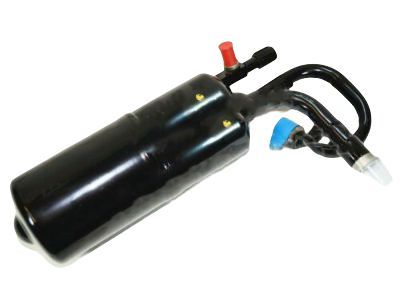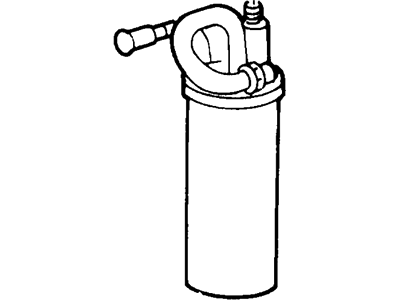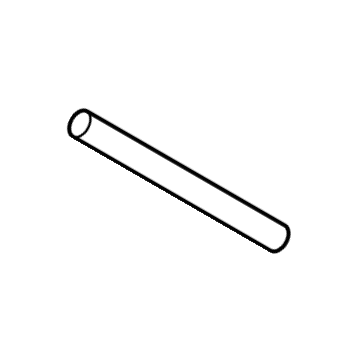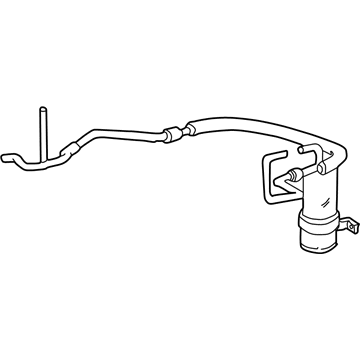×
- Live Chat
- 1-888-788-9341


My Garage
My Account
Cart
Genuine Ford Ranger A/C Accumulator
Accumulator- Select Vehicle by Model
- Select Vehicle by VIN
Select Vehicle by Model
orMake
Model
Year
Select Vehicle by VIN
For the most accurate results, select vehicle by your VIN (Vehicle Identification Number).
7 A/C Accumulators found
Ford Ranger Accumulator Assy - Air Conditioning
Part Number: XL2Z-19C836-AC$58.30 MSRP: $96.36You Save: $38.06 (40%)Ford Ranger Accumulator Assembly - Air Conditioning
Part Number: F87Z-19C836-AA$58.30 MSRP: $96.36You Save: $38.06 (40%)Ford Ranger ACCUMULATOR ASY - AIR CONDITIO
Part Number: KB3Z-19C836-A$18.01 MSRP: $28.73You Save: $10.72 (38%)Ships in 1-3 Business DaysFord Ranger Accumulator Assy - Air Conditioning
Part Number: F5TZ-19C836-A$132.91 MSRP: $292.73You Save: $159.82 (55%)Ships in 1-2 Business Days
Ford Ranger A/C Accumulator
The A/C Accumulator in Ford Ranger cars plays an important role in keeping the conditioner effective and lasting for a long time. Its main purpose is to prevent accumulation of dirt and water which serves as a cover for sub parts of the A/C system. This is a cylindrical element having openings leading to the condenser and the expansion valve to enable the flow of the refrigerant and at the same time filter dirt. In all the ranger models, there might have been changes to the use of different types of A/C Accumulator in the previous years, although specific types are not noted. The relative major differences between these styles are mainly in terms of their construction and integration into the A/C system of the vehicle involved. In general, the A/C Receiver Drier plays a critical role of enhancing the effectiveness as well as reliability of air conditioning mechanism in Ford Ranger automobiles.
We provide a wide range of Ford Ranger A/C Accumulator at the best prices possible. If you need Ford Ranger A/C Accumulator, you can shop with confidence on our website. All our OEM parts come with a manufacturer's warranty and are delivered to your door step with a fast delivery service.
Ford Ranger A/C Accumulator Parts Questions & Experts Answers
- Q: How to remove and install an air conditioning accumulator on 2000-2011 Ford Ranger?A: Have the air conditioning system discharged. Disconnect the negative cable from the battery. Unplug the electrical connector from the pressure switch near the top of the accumulator. Unscrew the pressure switch. Disconnect the refrigerant line from the accumulator. The accumulator is mounted on the evaporator case in the engine compartment - disconnect this quick-disconnect fitting. This requires a spring lock coupling tool of the type used for fuel injection system lines. Use a backup wrench to hold the fitting that connects the accumulator to the evaporator core, then disconnect the fitting. Plug the open fittings to prevent entry of dirt and moisture. Remove all mounting bracket fasteners, then lift the accumulator out. If a new accumulator is being installed, remove the Schrader valve and pour the oil out into a measuring cup, noting the amount. Add fresh refrigerant oil to the new accumulator equal to the amount removed from the old unit, plus one ounce. Use PAG oil for R-134a systems and mineral refrigerant oil for R-12 systems. Loosely position the new accumulator in place. Connect the accumulator to the evaporator core, using a new O-ring lubricated with clean refrigerant oil. At the same time, align the bracket with the slot between the evaporator case flanges. Using a backup wrench, tighten the fitting securely. Fully install the accumulator mounting bracket and tighten all fasteners. Install the clip that holds the evaporator inlet tube to the bracket (if equipped). Place a new O-ring, lubricated with clean refrigerant oil of the correct type, on the pressure switch nipple on the accumulator. Install the pressure switch. If it has a metal base, tighten it to the torque listed in the specifications. If it has a plastic base, tighten it by hand only. Connect the pressure switch electrical connector. Reconnect the negative cable to the battery. Take the vehicle to the shop that discharged the air conditioning system. Have the system evacuated, recharged, and tested for leaks.
- Q: How to remove and install an air conditioning accumulator on 1993-2011 Ford Ranger?A: Have the air conditioning system discharged. Disconnect the negative cable from the battery. Unplug the electrical connector from the pressure switch near the top of the accumulator. Unscrew the pressure switch. Disconnect the refrigerant line from the accumulator. The accumulator is mounted on the evaporator case in the engine compartment-disconnect this quick-disconnect fitting. This requires a spring lock coupling tool of the type used for fuel injection system lines. Use a backup wrench to hold the fitting that connects the accumulator to the evaporator core, then disconnect the fitting. Plug the open fittings to prevent entry of dirt and moisture. Remove all mounting bracket fasteners, then lift the accumulator out. If a new accumulator is being installed, remove the Schrader valve and pour the oil out into a measuring cup, noting the amount. Add fresh refrigerant oil to the new accumulator equal to the amount removed from the old unit, plus one ounce. Caution: Use PAG oil for R-134a systems and mineral refrigerant oil for R-12 systems. Loosely position the new accumulator in place. Connect the accumulator to the evaporator core, using a new O-ring lubricated with clean refrigerant oil. At the same time, align the bracket with the slot between the evaporator case flanges. Using a backup wrench, tighten the fitting securely. Fully install the accumulator mounting bracket and tighten all fasteners. Install the clip that holds the evaporator inlet tube to the bracket (if equipped). Place a new O-ring, lubricated with clean refrigerant oil of the correct type, on the pressure switch nipple on the accumulator. Install the pressure switch. If ii has a metal base, tighten it to the torque. If it has a plastic base, tighten it by hand only. Connect the pressure switch electrical connector. Reconnect the negative cable to the battery. Take the vehicle to the shop that discharged the air conditioning system. Have the system evacuated, recharged and tested for leaks.
Related Ford Ranger Parts
Browse by Year
2023 A/C Accumulator 2022 A/C Accumulator 2021 A/C Accumulator 2020 A/C Accumulator 2019 A/C Accumulator 2011 A/C Accumulator 2010 A/C Accumulator 2009 A/C Accumulator 2008 A/C Accumulator 2007 A/C Accumulator 2006 A/C Accumulator 2005 A/C Accumulator 2004 A/C Accumulator 2003 A/C Accumulator 2002 A/C Accumulator 2001 A/C Accumulator 2000 A/C Accumulator 1999 A/C Accumulator 1998 A/C Accumulator 1997 A/C Accumulator 1996 A/C Accumulator 1995 A/C Accumulator 1994 A/C Accumulator 1993 A/C Accumulator 1992 A/C Accumulator 1991 A/C Accumulator 1990 A/C Accumulator 1989 A/C Accumulator 1988 A/C Accumulator 1987 A/C Accumulator 1986 A/C Accumulator 1985 A/C Accumulator 1984 A/C Accumulator 1983 A/C Accumulator















